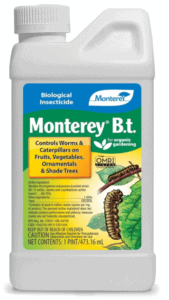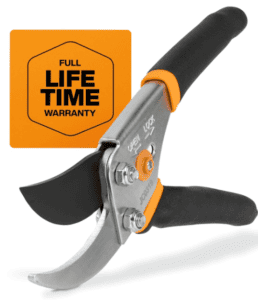According to master gardener Tom Wilson, “The white fuzz on hydroponic plants is usually powdery mildew, a common fungal disease.”
This pesky pathogen thrives in the warm, humid conditions inside hydro systems.
While rarely killing plants outright, powdery mildew can coat leaves and stems with distinctive white mycelium growths that hinder plant health.
Though it spreads rapidly on crops under cover,
Catching infestations early and adjusting conditions can control outbreaks before they get out of hand.
With diligent monitoring and targeted fungicides,
The tenacious fungi can be treated and reappearance prevented through vigilance.
This guide shares pro tips to banish mildew for good in your hydroponic garden.
KEY TAKEAWAY
What is the white fuzz on my hydroponic plants?
The white fuzz on hydroponic plants is likely mold or mildew, indicating a potential issue with humidity or cleanliness in the system. (1)
Identifying and addressing the root cause is crucial for maintaining a healthy hydroponic environment.
Identifying the Culprit: Is it Mold, Mildew or Root Hairs?
Source: Desert Plants of Avalon
When inspecting your hydroponic garden, white fuzz on plant stems and leaves may be one of three things.
Powdery mildew appears as flat white or grayish spots that spread into a coating of dusty mycelium.
Gray mold forms fuzzy tufts that quickly enlarge into masses of dark spores.
And healthy new root hairs emerging from stems often seem white and downy at first.
To identify the culprit, check if the growth rubs off easily.
Powdery mildew and gray mold brush away to reveal discolored tissue underneath, while fragile root hairs detach cleanly.
Also observe the spread pattern – harmful fungi expand rapidly, especially in stagnant air, while normal root hairs remain sparse.
Catching unfamiliar growths early allows prompt treatment before major crop damage.
So inspect plants thoroughly when maintaining your hydroponic system…
…and use these visual clues to discern harmless new roots from spreading mold or mildew.
Quick Fixes for Treatable Fuzz: Natural Remedies That Really Work
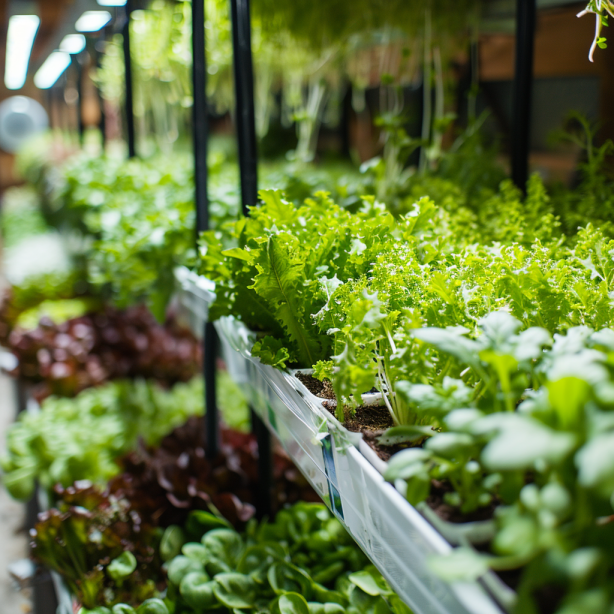
For new outbreaks of powdery mildew or gray mold, effective home remedies can often treat the issue without chemicals.
Mixing one part hydrogen peroxide with four parts water makes a simple anti-fungal spray. (2)
Test on a small area first before wide application.
Improving air circulation deprives mold and mildew of the humid conditions they need to thrive.
Position fans to gently blow within the growing media and not directly on fragile plant leaves.
Pruning or removing any infected plant parts limits the spread of spores to healthy vegetation.
Clean tools after each cut to avoid transmission.
While these DIY fixes help in early stages, severe or recurring fuzz requires stronger fungicides.
But implement preventative steps like better climate control and pruning in your grow room going forward.
Catching and treating early remains key to keeping mold and mildew at bay.
Long Term Prevention Strategies: A 5-Point Plan for a Fuzz-Free Future
Once you’ve tackled any current white fuzzy stuff on plants, implementing preventative measures keeps mold and mildew from returning.
A comprehensive defense includes:
- Selecting seed varieties specifically bred to resist fungal diseases
- Using filtered water and sterilized nutrients in the hydroponic system
- Keeping humidity levels between 40-60% to deter spore germination
- Pruning leaves and stems for improved air circulation around plants
- Testing and adjusting pH to best suit each type of crop you grow
Following these key tips makes your hydroponic grow environment far less hospitable for problematic fungi.
Stay observant for early signs of issues, but a proactive defense limits the need for reactive treatment down the line.
Clean Grow Techniques: Routine Cleanup and Care Tips to Deter Fuzz Fast
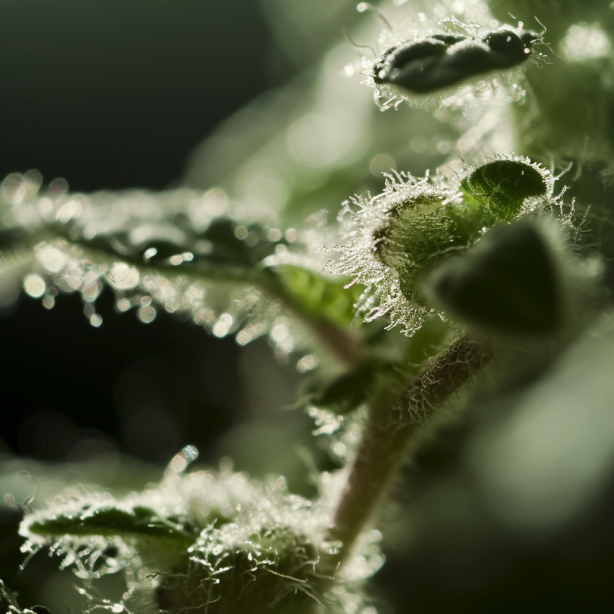
Besides prevention measures, good hygiene and plant care also deter mold and mildew in a hydroponic garden.
Always sterilize tools and hands between handling potted plants to prevent transmitting spores or infection.
Change nutrient solutions frequently and use hydrogen peroxide rinses in the system to prevent algae and pathogens from taking hold.
Remove any yellowing leaves or plant debris that could harbor fungal spores and inoculate healthy vegetation.
When adding new plants, quarantine them for a few weeks to check for emerging issues before integrating with the main grow.
Like housework, the best growing medium cleanup happens on a regular schedule, not just during outbreaks.
Following healthy horticulture habits at all times keeps your garden in tip-top shape.
Humidity Hackers: Master Environmental Controls and Stop Fuzz In Its Tracks
High humidity provides the moist conditions mold and mildew need to thrive.
Careful climate control in your indoor grow room deprives fungi and prevents outbreaks.
Use exhaust fans, passive vents, and dehumidifiers to keep levels below 60%.
Run fans to circulate air, avoiding direct wind on leaves.
Monitor with quality hygrometers and adjust equipment as needed with the seasons.
For small spaces, moisture-absorbing silica gel or containers of salt crystals can passively draw humidity down.
Just recharge/replace them routinely.
Get shade cloth covers to lower evaporative moisture loss from growing media during hot, humid weather.
This protects plants without needing to run AC nonstop.
Keep foliage dry when watering and ensure no puddles accumulate.
Growing in gravel beds improves drainage versus containers.
Match irrigation to seasonal needs.
With good data and responsive environmental tweaks, you can master moisture levels for healthy crops free of problematic white fuzzy stuff.
Pest Patrol: A Gnat’s Eye View on Fuzz Causes and Safe Treatments

While mold and mildew can grow on their own, pests often spread spores or create entry points for infection.
Root rot, fungus gnats, and shore flies are common culprits.
Hydrogen peroxide and Bacillus thuringiensis (BT) based treatments kill larvae in soil without harming mature plants.
Sticky traps monitor and reduce adults.
Fix plumbing leaks that allow organic matter to accumulate, fueling gnats.
Let growing media dry adequately between waterings.
Beneficial nematodes prey on pest larvae in soil while posing no risks to plants.
They come in easy-to-use packets with free shipping from reputable biocontrol vendors.
With proactive treatment and better sanitation, managing moisture-loving pests curtails related outbreaks of problematic white fuzz.
When to Isolate or Extract: A Plant Doctor’s Guide to Severe Cases
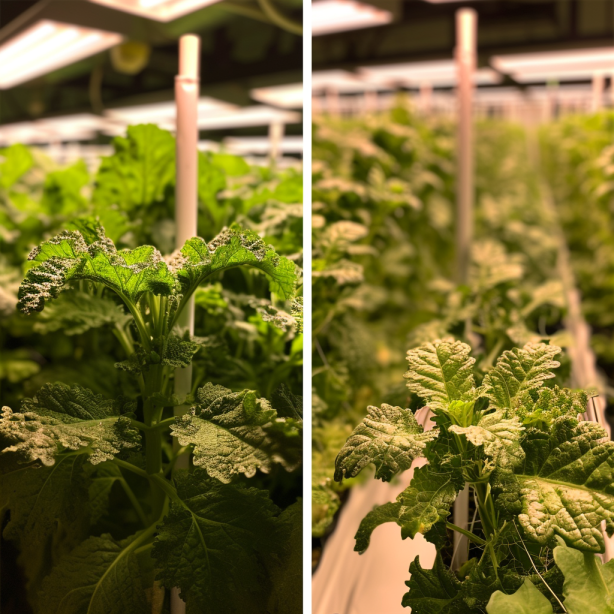
If you spot extensive white fuzzy growth on multiple plants, drastic measures may be needed beyond basic treatments.
As mold and mildew take hold, they quickly spread spores through circulation systems to all vegetation.
Saving part of your crop requires decisive action.
First isolate and stop sharing water or air flow with any severely infected plants.
If more than a third of leaves/stems are covered, the plant likely won’t recover.
Carefully remove it wearing gloves and a mask to limit spore exposure.
Aggressively prune infected parts trying to save a plant with localized powdery/gray patches.
Sterilize tools after every cut.
This may still fail if the fungi have penetrated vascular tissues.
As a last resort for mild cases not progressing into plant tissues, apply commercial antifungal chemicals.
See product guides that are hydroponics-safe and spray judiciously.
Many have harvest withdrawal periods before consuming crops.
While no gardener wants to lose plants or make harsh chemical interventions, getting rampant fungal growth under control protects your overall indoor garden.
Then reassess growing conditions and prevention strategies for the long term.
Frequently Asked Questions
What causes white mold on seedlings?
Gray mold (Botrytis cinerea) often affects young plants in overly humid environments.
It coats leaves and stems with fuzzy gray or brown spots.
Improve air flow and reduce humidity levels to deter this fungal disease.
Why do my plant roots have a weird white slime?
Excessive slime or biofilm on roots can indicate pathogenic bacteria or fungi establishing in your hydro system.
Rinse roots gently and change nutrient solution.
Consider beneficial microbes to improve root zone health.
I see tiny white bugs on my hydro basil – what should I do?
These may be fungus gnat larvae feeding on roots and leaves.
They spread fungal spores.
Apply hydrogen peroxide or mosquito dunks containing BTI to kill larvae in soil.
Use sticky traps for adults and let soil dry adequately between waterings.
What is the white residue left after treating mold?
Many fungicides and hydrogen peroxide leave a powdery white deposit after drying.
This is harmless, but can be rinsed off if desired.
The residue itself does not indicate mold remains active after treatment.
Check if any dark growth reemerges.
Conclusion
If you spot unusual white fuzz on plants, identifying the culprit early allows prompt treatment.
While sometimes normal root hairs, cottony growth often means emerging issues with mold, mildew or pests.
Catching and fixing problems before they spread prevents major crop damage.
Adjust any conditions fueling outbreaks – high humidity, poor air flow, overwatering.
Apply natural remedies first like hydrogen peroxide or horticultural oils to combat fungi.
Monitor for recurrence and isolate affected plants if necessary.
Prevention is key for long term success.
Select resistant cultivars, sterilize equipment, avoid moisture accumulation, and prune strategically.
Maintaining optimal balance in your enclosed hydroponic system supports plant health naturally.
With attentive garden care and the solutions above, problematic fuzz won’t get far.
But if you have any other questions on addressing diseases or pests, don’t hesitate to drop us a line!
References
- https://floraflex.com/default/blog/post/plant-diseases-to-watch-out-for-in-hydroponic-gardening#:~:text=Mold%20is%20one%20of%20the,or%20fruits%20of%20the%20plant.
- https://www.masterclass.com/articles/white-mold-on-plants#:~:text=Use%20vinegar.,traces%20of%20mold%20are%20gone.
Related Articles
- https://tophydroponicgarden.com/hydroponic-mistakes-troubleshooting/
- https://tophydroponicgarden.com/hydroponics-for-beginners/
- https://tophydroponicgarden.com/hydroponic-garden-maintenance/
Was this helpful?

I’m Barrie L., a passionate hydroponic gardening enthusiast dedicated to cultivating thriving, soil-less gardens. With a focus on all things hydroponic, I share my expertise on innovative growing techniques and sustainable practices through my blog, tophydroponicgarden.com. As a seasoned hydroponics specialist, my goal is to inspire and guide fellow gardeners in harnessing the power of water-based cultivation for bountiful and eco-friendly harvests. I’m also an author of the book “Hydroponics For Absolute Beginners: Your Step By Step Guide For How To Create An Hydroponics System At Home Without Soil, For Growing Vegetable, Fruit And Herbs.” which is sold on Amazon. Join me on a journey of redefining the way we cultivate plants, one nutrient-rich solution at a time. Happy growing!



